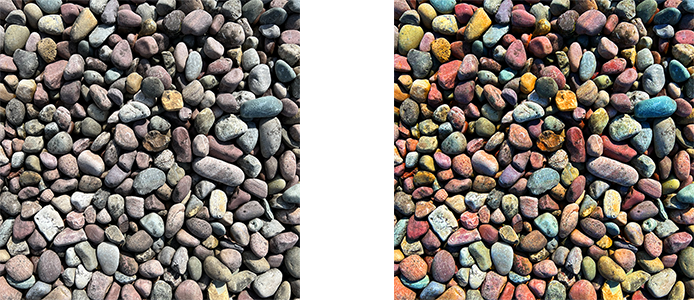Here’s a possible example of seeing more of what’s there. In this case, colors in a simple field of rocks. What do we see? What’s really there?
Two pictures; both are of the same thing, but one is processed to bring out the colors.
To a casual view, the original rocks have drab, undifferentiated colors. So much so that we might even describe the area as a spread of gray rocks, especially if seen from a distance.
However, if the colors are enhanced, we see what’s really there — there are big differences between the various rocks. Only a few of them are truly gray.
Now, color is something that only exists in our minds; it is a simplified sense of the many different ways that light is reflected from an object. In this case, all the rocks reflect light differently, but with differences so small that we barely see them.
By enhancing the colors, we see the differences more clearly. It’s like looking at something through a microscope — the object doesn’t get any bigger, but it looks bigger so we can see details more easily. Similarly, processing made the color differences look bigger that they really are, and that allows us to see them more easily.
